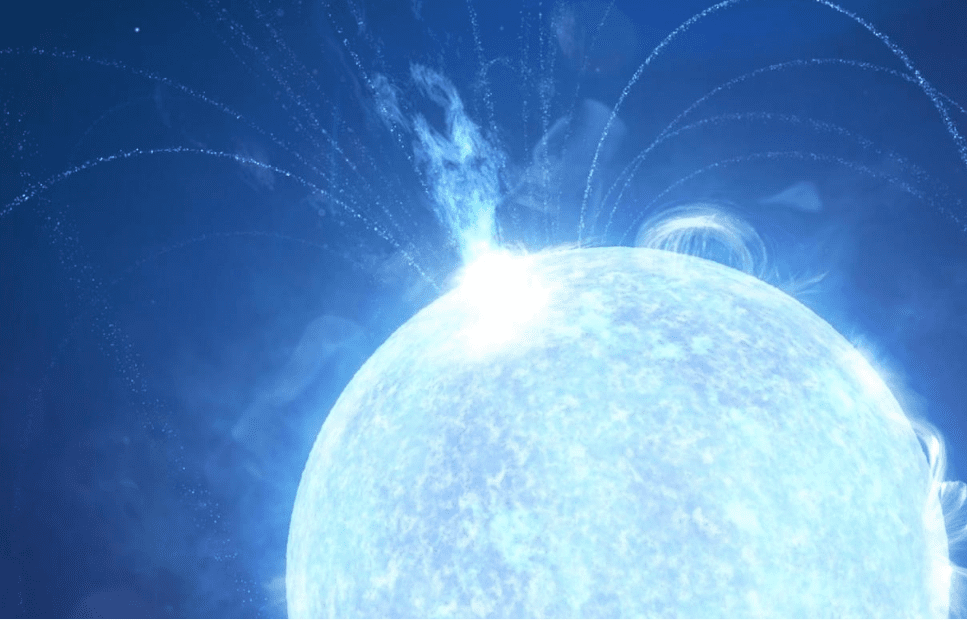A “cosmic beast” has been detected, spewing energy with the power of one billion Suns into space
“This magnetar seems to have decided to emerge from its cosmic solitude by shouting into space with the power of a billion Suns”
Astronomers have detected a violent explosion in a neutron star, which they describe as a “cosmic beast.”
The explosion blasted into space as much energy as the Sun could generate in only 100,000 years.
The observation, made thanks to an artificial intelligence system developed at the Image Processing Laboratory of the University of Valencia in Spain, revealed that the energy eruption occurred in as little as one tenth of a second.
This type of star, known as a magnetar, is a neutron star with an extremely strong magnetic field. Explosions in magnetars often occur without warning. That’s why it’s difficult for astronomers to find and study them.
But a research team of 41 scientists has now managed to capture one of these flares and calculate the energy released by the magnetar. This rarely observed cosmic event was named GRB 2001415.
Astronomers speculate that such eruptions are caused by instabilities in the star’s magnetosphere, or a type of “earthquake” in its crust.
Dense neutron stars, formed when a star collapses into itself, have a mass of about 1.3 to 2.5 times that of the Sun. Magnetars are unusual stars with magnetic fields a thousand times stronger than other neutron stars.
“Magnetars can be 100,000 times brighter than our Sun, even when inactive,” said lead author of the study, Alberto J. Castro-Tirado.
However, the energy released in the flare event we examined (GRB2001415) is equivalent to the energy emitted by the Sun in 100 thousand years.
The magnetar from which this short burst occurred is located in the Sculptor Galaxy, about 13 million light-years from Earth.
Victor Reglero, co-author of the study published in the peer-reviewed scientific journal Nature, described the star in question as a “true cosmic monster”:
It’s as if this magnetar has decided to emerge from its cosmic solitude by shouting into the vacuum of space with the power of a billion Suns.
Of the nearly 3,000 known neutron stars, only about 30 magnetars have been identified. GRB2001415 was the most distant magnetar burst ever detected.





